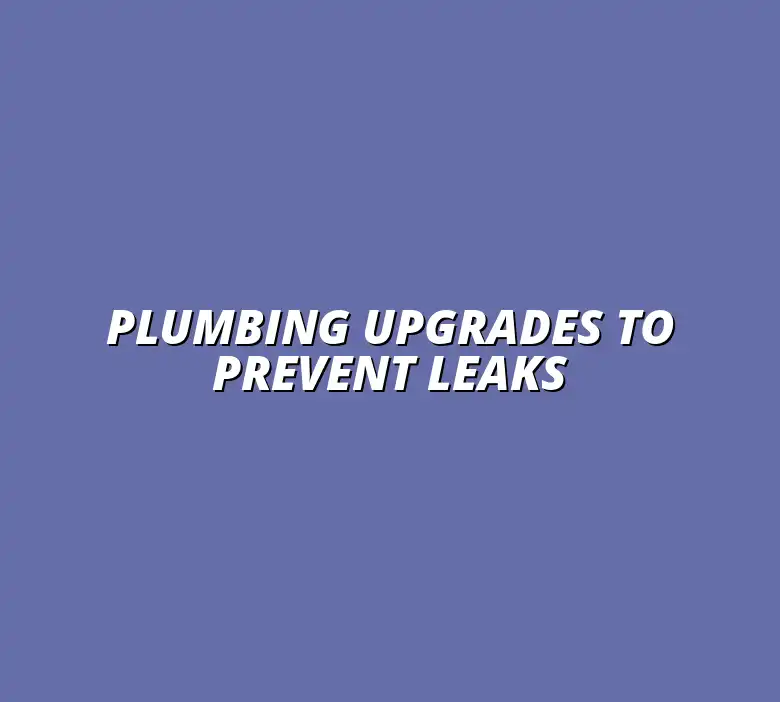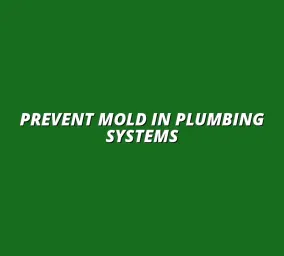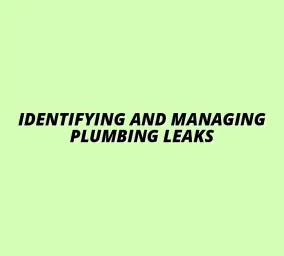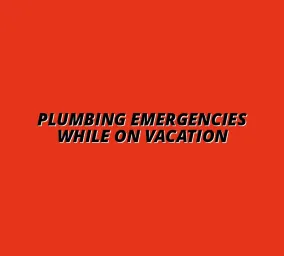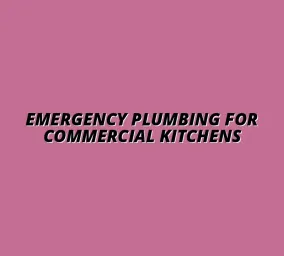Plumbing Upgrades to Prevent Leaks
Understanding the Importance of Plumbing Upgrades for Leak Prevention
When it comes to protecting our homes, plumbing upgrades are often overlooked. Many homeowners don’t realize that outdated plumbing can lead to serious issues, including leaks and water damage. By investing in upgrades, we can prevent costly repairs and safeguard our homes from the potential devastation that water can cause.
Upgrading plumbing isn’t just about fixing existing problems; it's also about preventing future issues. A proactive approach can save us from extensive damage, both financially and structurally. Let's dive deeper into why these upgrades are essential for leak prevention. For more tips on preventing plumbing issues, check out this helpful guide: Prevent Plumbing Issues in Homes.
The Financial Impact of Water Damage
Water damage can wreak havoc on our wallets! The costs associated with fixing water damage often extend beyond just repairs. To truly understand the financial implications, we need to consider insurance claims, lost property value, and repair costs.
Assessing the Long-Term Costs of Plumbing Failures
When plumbing fails, the expenses can add up quickly. Here are some of the long-term costs to keep in mind:
- Repairing damaged flooring, walls, and ceilings.
- Replacing furniture affected by water exposure.
- Ongoing water bills due to hidden leaks.
By addressing plumbing issues early on, we can minimize these costs. It’s much cheaper to upgrade than to manage the aftermath of a leak!
Statistics on Water Damage Incidents
Statistics paint a stark picture of how common water damage is. Did you know that approximately 1 in 50 homeowners will file a claim for water damage each year? This shows just how important it is to stay vigilant.
Additionally, research indicates that water damage claims can average around $10,000 or more. This highlights the need for effective leak prevention strategies, including plumbing upgrades. Learning how to prevent water damage with proper plumbing care is crucial.
Key Indicators of Plumbing Issues
Identifying plumbing issues early can save us from bigger headaches! But how do we know when something is wrong? Here are some key indicators to watch for:
- Unexplained increases in water bills.
- Visible signs of water damage, like stains on walls or ceilings.
- Low water pressure in faucets and showers.
By being observant, we can catch potential leaks before they turn into costly repairs!
Common Signs of Potential Leaks
Leaks can be sneaky and sometimes hard to detect. Some common signs include:
- Pooling water in unusual places.
- Musty smells indicating hidden moisture.
- Constantly running or hissing toilets.
If you notice any of these signs, especially in your bathroom, it might be time to consider an upgrade or call a plumber! Check out these tips on how to check for hidden bathroom leaks.
When to Consider Upgrading Plumbing Fixtures
Knowing when to upgrade plumbing fixtures can be a game changer. Consider upgrading if:
- Your fixtures are more than 10 years old.
- You notice consistent leaks or drips. Learn how to stop a faucet leak quickly if you are experiencing this issue.
- You're planning a renovation or remodel.
Making these upgrades not only helps in preventing leaks but also improves the overall efficiency and functionality of your plumbing system!
Addressing Common Concerns About Plumbing Upgrades
When considering plumbing upgrades, many homeowners worry about the costs involved. It’s important to have a clear understanding of what these upgrades may entail financially. From the initial installation to potential future maintenance, knowing the full expense can help you budget more effectively for your plumbing needs.
Many factors can influence the overall cost of plumbing upgrades, including the type of materials you choose and the complexity of the installation. Generally, investing in high-quality materials and skilled labor can save you money in the long run by reducing the likelihood of leaks and other plumbing problems. If you need a plumber in the Birmingham area, consider this plumber in Billesley, Birmingham.
How Much Do Plumbing Upgrades Cost?
Budgeting for plumbing upgrades can feel overwhelming, but it doesn’t have to be. Here are some typical costs you might encounter when upgrading your plumbing:
- Pipe Replacement: $1,500 to $15,000 depending on materials and scope.
- Fixture Upgrades: $100 to $1,000 per fixture, depending on brand and efficiency.
- Smart Water Shut-Off Systems: $200 to $1,500 based on features and installation.
By knowing these costs upfront, you can make informed decisions about your plumbing upgrades. It’s also wise to get multiple quotes from contractors to ensure you’re getting a fair price.
Budgeting for Upgrades: What to Expect
When planning for your upgrades, it’s essential to create a comprehensive budget that includes not just the materials and labor, but also any additional fees. Some common expenses beyond installation might include:
- Permits and inspections
- Potential repairs to walls or floors
- Long-term maintenance and service agreements
By taking these additional costs into account, you can avoid surprises and ensure your plumbing project stays within your budget.
Financing Options for Homeowners
Many homeowners may find it beneficial to explore financing options when considering plumbing upgrades. Remember that proactive maintenance can save you money in the long run. Learn how to maintain your plumbing system easily to prevent costly repairs.
- Home equity loans or lines of credit
- Personal loans
- Specialized home improvement financing programs
These financing options can help spread the cost of upgrades over time, making it more manageable to invest in essential plumbing improvements.
How Long Do Plumbing Upgrades Last?
One of the key considerations when investing in plumbing upgrades is the expected lifespan of different materials. Knowing how long your upgrades are likely to last can help you plan for future maintenance and replacements. Regular maintenance of your water heater is also important. Check out these tips for preventing leaks: Prevent Water Heater Leaks Easily.
Typically, here are some lifespans you can expect from various plumbing materials:
- Copper Pipes: 50+ years
- PVC Pipes: 25-40 years
- PEX Pipes: 40-50 years
Understanding these lifespans can aid you in choosing the right materials that align with your long-term plumbing goals.
Expected Lifespan of Different Plumbing Materials
In addition to knowing the lifespan, it's crucial to recognize factors that may affect how long your plumbing upgrades last. Environmental conditions, water quality, and the initial installation quality can all play a role. It’s beneficial to consult with a plumbing professional to ensure you're making the best choices.
Maintenance Tips for Prolonging Lifespan
Regular maintenance can significantly extend the lifespan of your plumbing system. Here are some vital tips to keep in mind:
- Inspect for leaks and corrosion regularly.
- Flush your water heater yearly to prevent sediment buildup.
- Know your water pressure and monitor it to avoid stress on pipes.
By being proactive with maintenance, you can enjoy longer-lasting plumbing upgrades and reduce the risk of unexpected repairs.
Final Considerations for Preventing Leaks and Water Damage
As a homeowner, it’s crucial to build a proactive plumbing maintenance plan. This not only helps in identifying potential issues early but can also save you money in the long run. An effective maintenance schedule should incorporate regular inspections and necessary upgrades.
Technology also plays a key role in modern plumbing maintenance. By utilizing smart plumbing devices, you can monitor your system more closely and respond to issues before they escalate.
Building a Proactive Plumbing Maintenance Plan
Creating a schedule for regular plumbing inspections can dramatically reduce the risk of leaks and water damage. I recommend setting up a routine to check key areas in your home, such as:
- Under sinks and around fixtures
- Basements and crawl spaces
- Water heaters and appliances
This regular attention to your plumbing can catch small problems before they become costly repairs.
Creating a Schedule for Regular Inspections
A good rule of thumb is to inspect your plumbing at least once a year, but if you live in an area with hard water or significant temperature fluctuations, consider increasing the frequency. A well-timed inspection can be your first line of defense against leaks and water damage.
Utilizing Technology for Plumbing Monitoring
Modern technology has made it easier to keep an eye on your plumbing. Smart leak detectors can alert you to leaks instantly, while smart water shut-off valves can automatically shut off your water supply in case of a detected leak. Investing in these technologies can provide peace of mind.
Encouraging Homeowner Awareness and Education
Staying informed about plumbing issues is vital for preventing future problems. As a homeowner, I encourage you to continuously educate yourself on plumbing maintenance techniques and advancements in materials. This knowledge empowers you to make better choices for your home.
Resources for Staying Informed on Plumbing Issues
There are numerous resources available to help you stay updated. These include:
- Local plumbing associations
- Online forums and blogs
- Home improvement workshops
By actively seeking out information, you can be proactive about plumbing maintenance and repairs.
Community Programs for Plumbing Education
Many communities offer programs aimed at educating homeowners about plumbing. Participating in these programs can provide valuable insights and tips from experts in the field. Make sure to check your local community center or library for upcoming workshops or classes.

